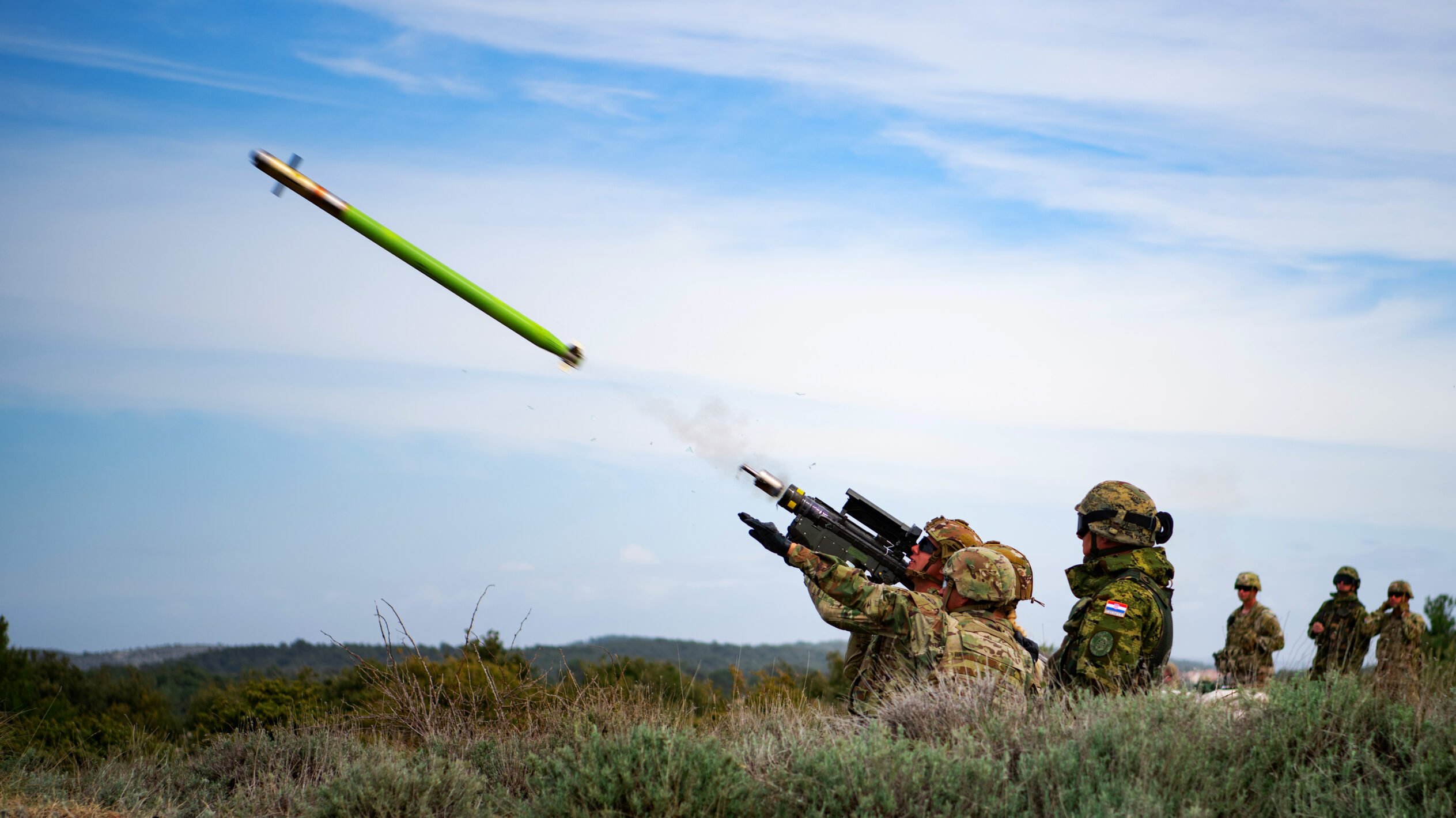
US Army paratroopers assigned to the 173rd Airborne Brigade fire a FIM-92 Stinger during an air defense live-fire exercise in April 2022 alongside soldiers with the Croatian Air Defense Regiment. (US DoD)
WASHINGTON — Shipments of US Stinger missiles to Ukraine have revived interest in the previously-thought-obsolete surface-to-air weapon, and a service official says the Army is poised to move forward with a replacement program next year.
“We do have a path to a Stinger replacement program [and] we’re going to work with Congress in [fiscal 2024] about potential options for starting in that year,” Army acquisition head Douglas Bush said today during an online Defense News event. “It’s a clear requirement and the Army is going to move out on that.”
The Biden administration is expected to deliver its budget request to lawmakers this week, while the Pentagon and services have tentative plans to detail their respective portions of that plan over the subsequent days via press conferences, releasing justification documents and heading to Capitol Hill to field lawmakers’ questions. Additional details about a next-generation Stinger program should emerge and include additional details about a competition, the service’s proposed development timeline and investment strategy.
In truth, the Army previewed some of its plans last year when it issued a request for information to industry for a new surface-to-air missile for its Maneuver Short Range Air Defense Increment 3 (M-SHORAD Inc 3).
“The current Stinger inventory is in decline,” the service wrote. “The Army plans to begin design, development, and test of a replacement missile in FY23 leading to the production of 10,000 M-SHORAD Inc 3 missiles beginning in FY27.”
While Army officials may have tweaked that timeline and plan since releasing the solicitation in April 2022, broadly speaking they are looking for a soldier portable, all-up round more lethal than the current Stinger missile (with proximity fuse capability). That future missile will be launched from the Stinger Vehicle Universal Launcher to target rotary-wing and fixed-wing aircraft, and Group 2-3 (medium and large) unmanned aircraft systems.
As Army officials like Bush brief lawmakers on their Stinger replacement plan, they are also moving ahead with plans to refill the depleted stockpiles, in part, through a refurbishment effort.
Before Russia invaded Ukraine in February 2022, the Army and Marine Corps had not bought Stinger20924 systems for decades, and the Raytheon production line served only a single international customer. But a month into the invasion, the weapon had proven so useful on the battlefield that members of Congress were beginning a push for the Army to create a next-gen replacement, while demanding information on why stockpiles could not be rapidly increased.
Ultimately, because Stinger is made with a number of components that are no longer in production, there is a finite number of Stingers that could be manufactured with the existing parts available. The Army’s April 2022 solicitation, for example, notes that the Stinger- Reprogrammable Microprocessor (RMP) will become obsolete this year and Stinger Block I is undergoing a service life extension.
Bush said the service has not formulated a refurbishment plan with Raytheon to refill its Stinger stockpiles until a next-generation weapon is fielded.
“We found some ways to buy time in the near term, including, for example, refurbishing older Stinger missiles,” Bush said today. “We think we’ll get at least 1,200 good new Stingers out of that effort, and save a lot of money doing it.”
“That buys us time to make sure Stinger stocks are healthy enough to give us time to get the new program underway,” he added.






















